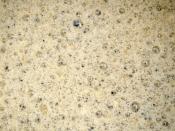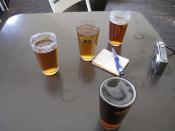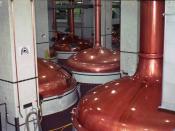Beer brewing and consumption has been around for an estimate of 5000 years. The technique that was discovered was actually an accident involving barley being soaked in the rain, spontaneously fermented, flavored with honey and dates, and it was drank from jugs with straws. This accident was perfected to the point where there are now more than 70 types of beer. Beer is part of most societies, and it has become a major industry in the Americas, Europe, and Asia. In the 1990's in the United States, more than 200 million barrels of beer were produced, and an average of each adult consumed 121 liters of beer in their lifetime. College students alone spend $5.5 billion on alcohol, which is mostly beer. This averages to $466 per year! As youth continue to spend insane sums of money on alcohol, the irony of it is that most young people do not know the least about the properties of alcohol.
Beer is the most commonly consumed alcoholic beverage of minors. Now, with all this beer being consumed, has the initiative ever been taken to enlighten others on the chemistry behind this enjoyed yet dangerous intoxicant?
Beer consists of three main chemical proportions: barley, hops and yeast [water is excluded]. But it's not just a matter of mixing the right amount of each ingredients. A complex series of chemical reactions must take place to convert barley to fermentable sugars, and allow yeast to live and multiply, converting those sugars to alcohol. In the first step of brewing, called malting, barley kernels are steeped, permitted to germinate, and then heated to temperatures as high as 110ðC until dry. "The higher the temperature, the more roasted, toffee-like flavors are present in the beer," says Charlie Bamforth of the University of California. After malting, the barley...


